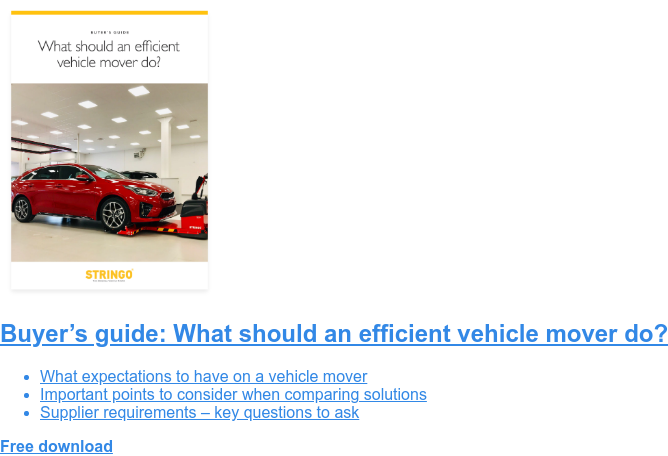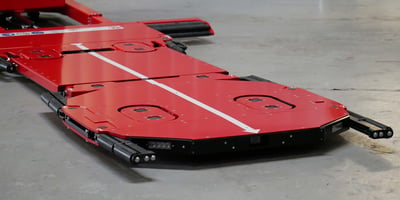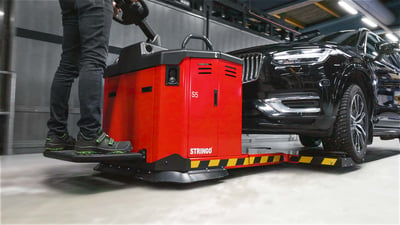When moving cars in production facilities, you need to take measures to ensure the safety of employees, the vehicles, and the vehicle mover. Learn about common challenges and risks associated with moving heavy vehicles and what actions you should take to avoid them from happening.
What are the typical challenges of moving heavy vehicles?
When moving cars, a crucial part of the transportation process is connected to if you can easily and quickly remove the car when you need to. The solutions in modern car production are more technical and advanced than ever before. These newer solutions, or other mechanical parts, can sometimes fail and cause problems at the end-of-line or elsewhere in the production facility. To avoid downtime or unnecessary stops, you need to be prepared to quickly take care of unexpected situations if the car for some reason cannot be driven.
If you don’t have a flexible way to move your vehicle when a problem like this occurs, you can be forced to stop the line, and end up losing valuable minutes. In a near future, we will see even more sophisticated solutions in the making of cars. That’s why it’s more important than ever to be prepared for whatever’s around the corner.
Find out 5 efficient ways a car production engineer can use a vehicle mover
What are the general safety risks associated with moving heavy vehicles?
Moving heavy vehicles, especially over uneven ground and varied road surfaces can lead to the vehicle rocking back and forth or from side to side. There’s a potential risk of the vehicle being damaged or even coming off the vehicle mover.
There’s also the risk of safety for the operator involved. An uneven ground might result in the operator losing control over the vehicle mover. Stability means control, and if the platform is steady, the operator is in control.
How do these problems affect the production process?
There’s no escaping the fact that time is money at the end of the production line. If a vehicle won’t start and you’re forced to stop the production line, you have to wait for a group of people to move it by hand. A process that will take a few minutes, and you end up losing around $20-30 000 every single minute.
Time is money – find out the main differences between using a vehicle mover and push cars by hand

How can a heavy-duty vehicle mover increase safety?
It’s very simple. Increased stability = increased safety. When an operator's platform is rocking back and forth, it’s an unsafe environment both for the operator and the people around. If a car shuts down, you can use a heavy-duty vehicle mover to quickly drive up on the production line, grab the vehicle and pull it off. You won’t have to stop the production line even for a minute. If you have a stable platform on your heavy-duty vehicle mover, you can do it quickly with confidence. You can move all vehicles directly, even those that can’t be put in neutral.
Extra safety features
Roller planes give you the right capability and allow you to smoothly load your vehicle on the machine. With the structure of the roller planes and the overall protection on the press arms, you automatically and safely capture and keep the vehicle on the vehicle mover.
This will lower all stress-related feelings in bringing the vehicle upon the machine. You won’t have to force the wheels upon the vehicle mover, they will naturally roll, and you will never have to worry about a vehicle rolling off the vehicle mover.
Besides that, a high-performance vehicle mover includes the same safety features as regular vehicle movers, like an electric horn and emergency breaker. Need help in choosing the right vehicle mover? Download our complete buyer’s guide!
Buyer’s guide: What should an efficient vehicle mover do?





